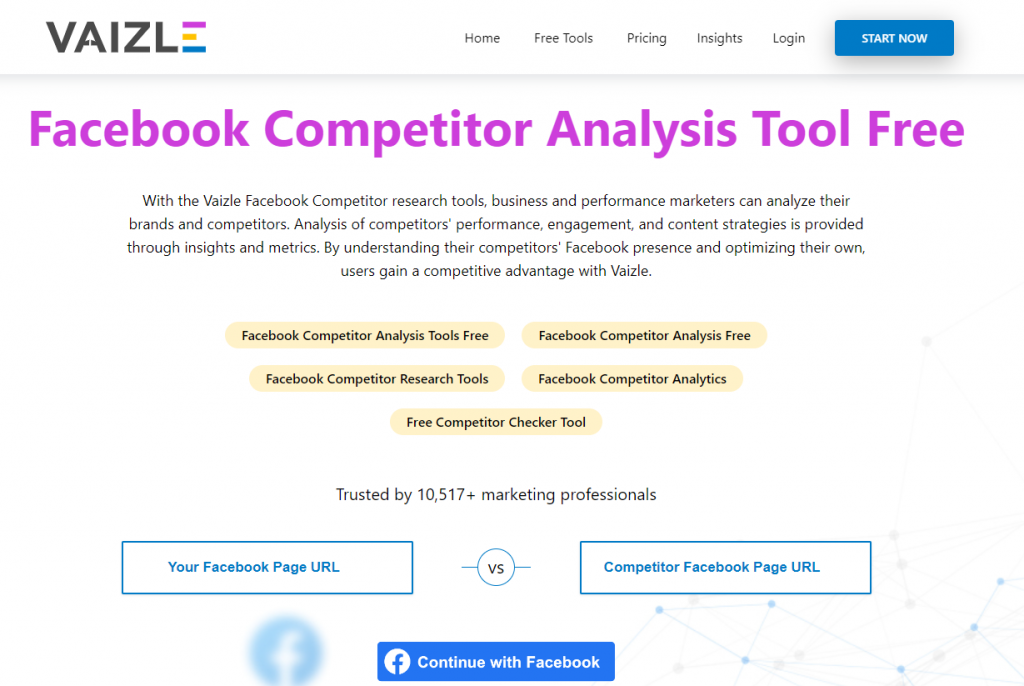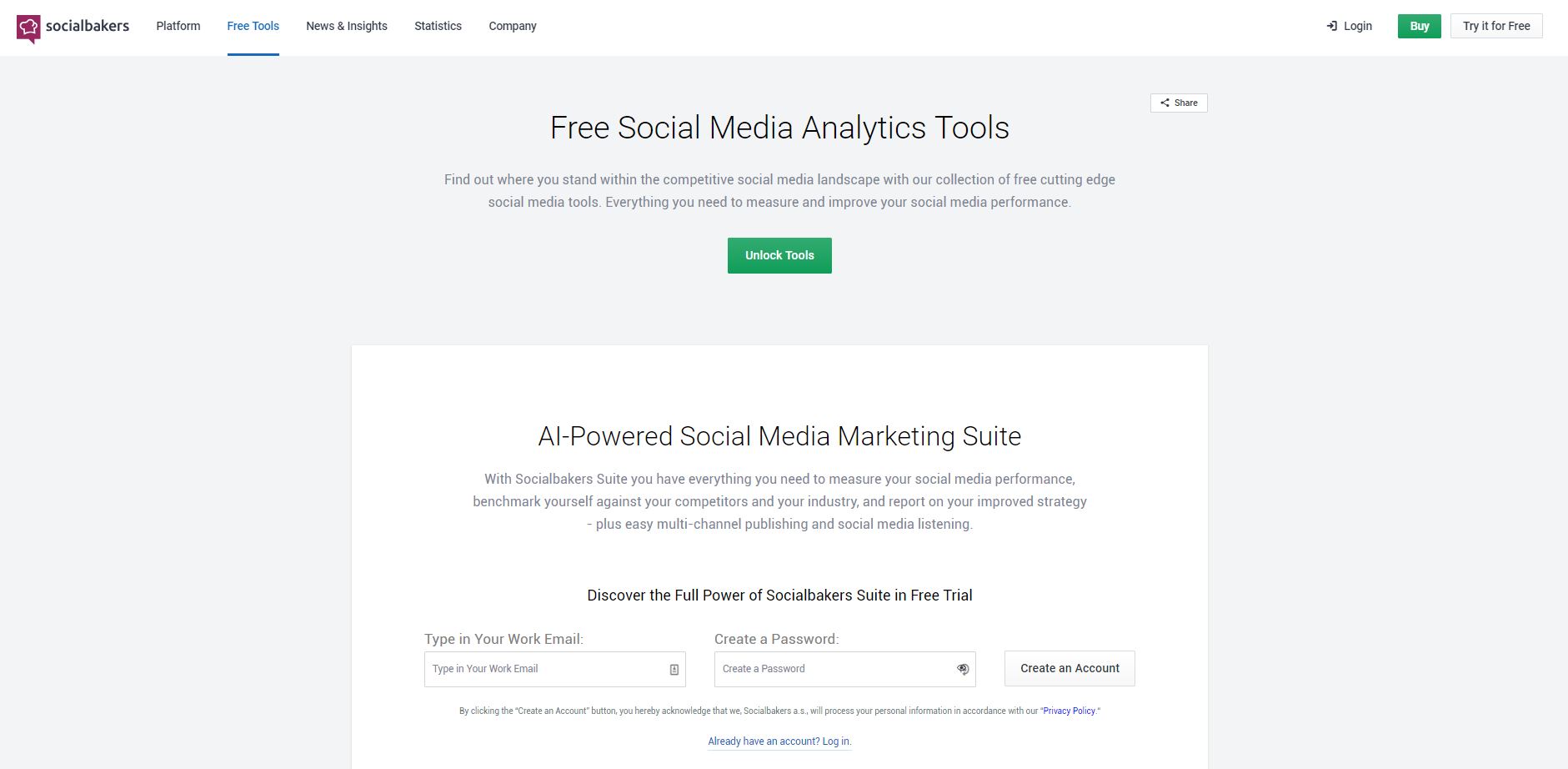It takes a lot of time and energy to build a social media strategy. After you start implementing that strategy, you need to make sure that you are going in the right direction. The best way to do that is to perform a social competitors analysis.
Competitive social media audit? Sounds complex, doesn’t it?
But actually, it’s easy if you know how to do it. Nowadays, with the help of social media competitive audit tools, you can perform your competitive audit within seconds.
Social media audits gather all relevant social media data and metrics for businesses. Social media brand audits and social media competitive analysis are often used interchangeably.
In a nutshell, an audit is a process of gathering all the key data for your business. To improve your social marketing strategy, you need to dive into this data and analyze it.
In order to maximize your social media marketing efforts, you should conduct a social media competitive audit of your competitors’ pages.
A competitive social media audit is a technique that helps you identify how good or bad you are performing on social media as compared to your competitors.
But why do we need social media competitive analysis at all?
The text in bold letters above, casual as it may seem, is the crux. Self-audits, as you will see in the next part, only compare ‘you’ against….yes, you guessed it right, against ‘you’.
It’s only in the competitive analysis that you start creating a holistic picture of your social media performance.
Let’s assume on a performance scale of 1-100 (1 being the lowest and 100 being the best), that your performance was 25 last month and is doing 50 right now, it might seem to jump by 100%.
But practically, it doesn’t tell you anything. For instance, it doesn’t tell you:
And the last question is specifically important. Self-audits don’t take competitors into account.
Social media competitive audit (or competitive brand audit) will help you decide whether you need to change your social marketing strategy or not.
In this article, I am going to show you how you can perform a competitive social media audit in 4-simple steps for free.
You know the one question we never anticipated while launching Vaizle:
“Does your tool also tell who’s my competitor? And how can I find my true competitor?”
Notice the word “true”.
It’s an enigma. Downward spiral. Because most people just settle with those competitors they can see or settle with the first few names they find on the search engine.
But that’s one topic I will reserve for another day.
The Question at hand is, who are competitors and how to find out a company’s competitors?
Choosing the right competitors is the key to the whole process.
You can start by asking how many competitors you should choose. In general, 3-5 competitors are enough when you are auditing once a month. But if you are auditing weekly then one competitor will be sufficient.
Try to possibly bring diversity to the competition you’re selecting.
For instance, if you’re a national clothing brand, and trying to choose 5 competitors for a social media competitive audit, you can select your competitors like this.:
Here’s the logic behind this. They are all competing with you at some level and if you just choose the industry’s top names, you’re missing the whole picture.
Tip: Try choosing all competitors as direct competitors – competitors operating exactly in the same industrial domain as yours.
Once you have a list of the competitors you want to audit, the next step of the process is to identify which social media channels you should audit. Not all your competitors are active on all the platforms.
By the way, this process can also be a step in your SWOT analysis: Strength, Weakness, Opportunity, & Threat.
You might want to audit only those platforms on which your company is active. However, this is entirely up to you how you want to approach this.
But in my experience, auditing those social platforms on which you are not active but your competitors are may open up new frontiers. And give you new campaign ideas.
Tip: When you are doing cross-channel analysis (combining data of all social media platforms), only add those platforms in your audit on which you and every competitor are active.
After that, take a look at the social media followers of your competitors.
Visiting your competition’s social profiles may give you access to much of this information. In order to get more detailed data, you may need to use some of the tools we’ve highlighted below.
Some metrics should always be in an audit, even though your objective varies. If you are wondering what to include in a social media audit, there are some pretty standard metrics every business can include in its social media competitive analysis.
For instance:
I’ve seen people going after all the social media metrics or trying to be choosy just so they can reach a specific result.
Tip: Don’t forget to include top-performing content and content types in your audits. It will help you create a better content strategy for social media.
Once you have settled the above three steps it is time to get into your analysis. So how to analyze competitors’ social media?
You can try some social media audit tools if you want to make it quick. Some social media audit tools inherently have competitive analysis built in them, but with others, you can audit one brand at a time.
Here are some popular social media competitor analysis tools:
With these tools, you can do a competitive audit exercise in less than 30 minutes. 60 minutes at worst.
If you don’t want to spend on paid tools, you can get these audits using some social media competitor analysis tools for free.
Here are two of them.

With Vaizle’s free social media competitor analysis tool, you can do a quick competitive analysis with any one of your competitors.
Select the social media platform you want to perform the audit for. Vaizle allows you to do that for:
Then enter your and your competitor’s social media page URL and click to get social media competitive analysis. And you will get a comparison of your performance versus your competitor’s performance.
Vaizle will give you a week-by-week analysis of the last 28 days of the data. You will get data for brand activity, brand engagement, and most successful content. This audit will help you decide what type of content you should post on your social media channels.
It will also give you a brand engagement breakdown for any specific platform.
Socialbakers provides a free competitive social media competitor audit tool for Facebook and Instagram analytics. There is another tool for Facebook ads performance prediction that can help you decide how much you need to spend on Facebook to achieve your goals. It also provides free Twitter analytics tools.

To get started with an audit, you have to click on unlock tools and fill in the required details.
Once, you have filled out the form then you can select the tool you want to use. After selecting the tool, you can enter the URLs of the account. Once you enter the details, it will give you data for brand activity, brand engagement, and brand response. The social media competitor analysis report will be emailed in PDF format.
Tip: You can only compare two competitors at a time using these free tools. To get a comprehensive analysis you have to enter this data manually into an Excel sheet.
That’s how easy it is.
It makes no sense to gather all this information and data about your competitor’s social media strategy without also monitoring your own.
To see how you stack up against your competitors, use tools and templates to benchmark your data. Be sure to perform these audits and analyses on a regular basis to keep your data up-to-date. By doing so, you will be able to uncover more about the competition’s strategies and use them as an opportunity for your growth.
Last but not least, if Instagram is your main platform of choice, Vaizle may be the tool you have been looking for. To improve Instagram marketing, Vaizle is a social media analytics tool. You can track and analyze Instagram performance using its built-in analytics tools. In addition to comparing your Instagram account to that of your competitors, you can also use this data to determine how well you’re performing.
Before I end this article, I wanted to show you some of the best competitive social media audit examples I could find:
I am sure if you search on the internet, you will find even more such examples.
You can keep it as simple or as thorough as you want. Even if you’re doing a brand’s social media audit, a competitive audit has got to be a part of it.
Siddharth built two bootstrapped companies from the ground up: Vaizle and XOR Labs. He’s personally managed over Rs 100cr in ad budget across eCommerce, D2C, ed-tech, and health-tech segments. Apart from being a full-time marketer, he loves taking on the challenges of finance and operations. When not staring at his laptop, you’ll find him reading books or playing football on weekends.